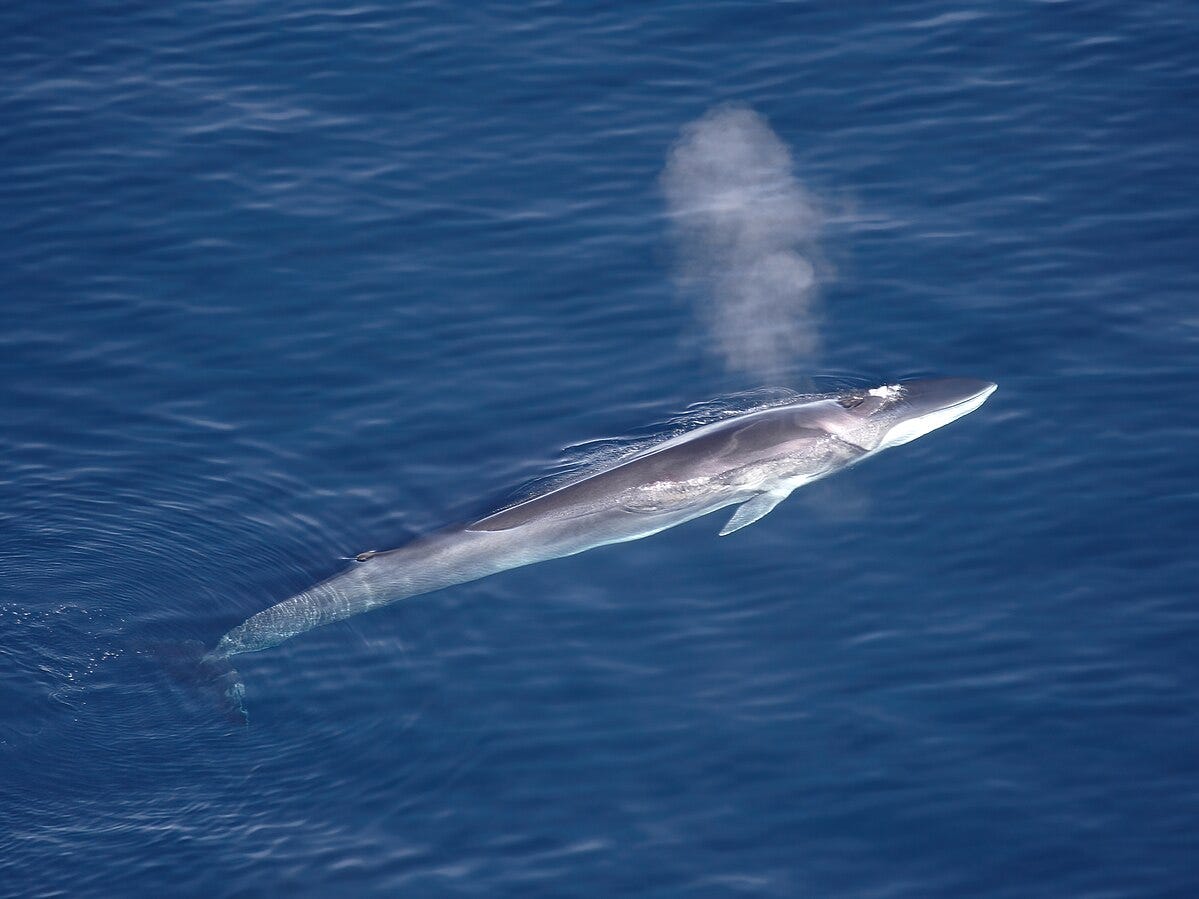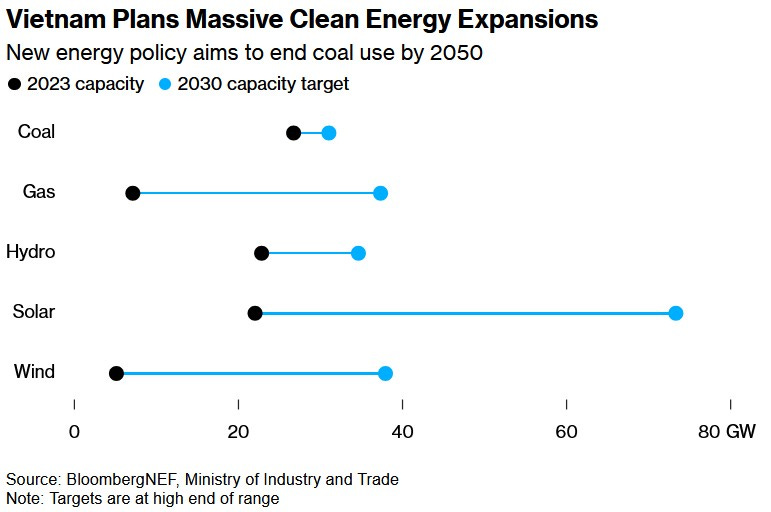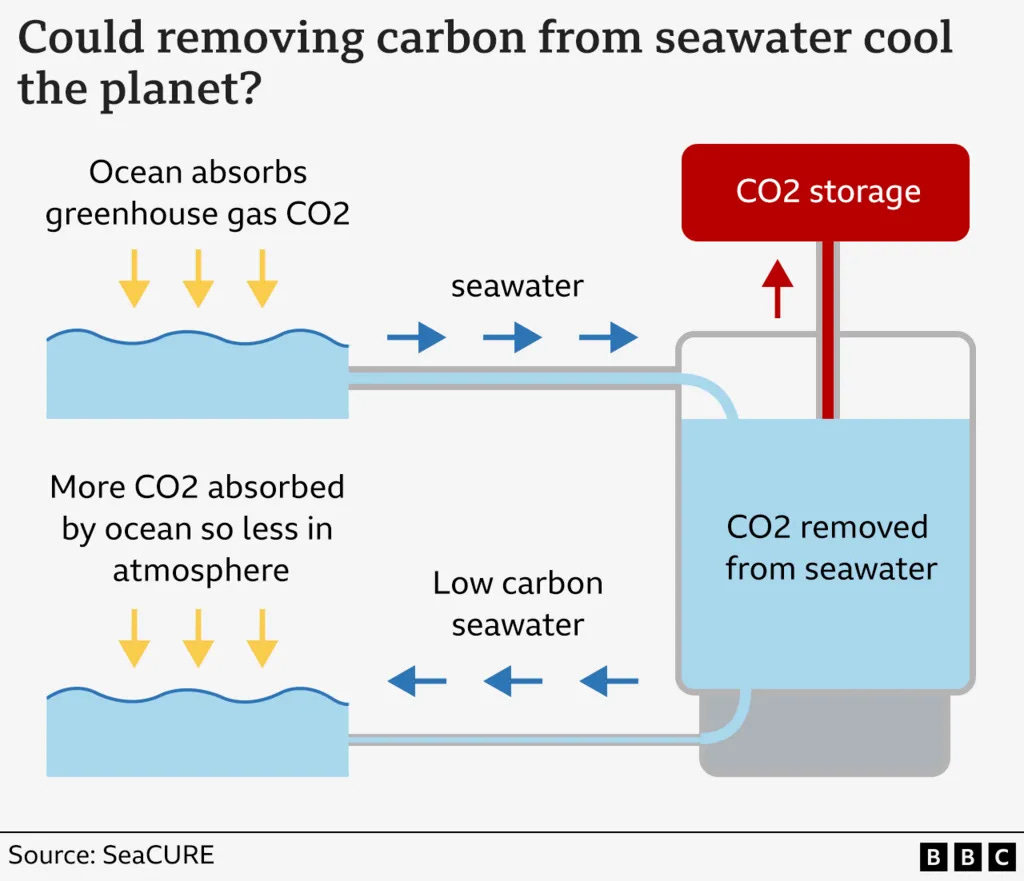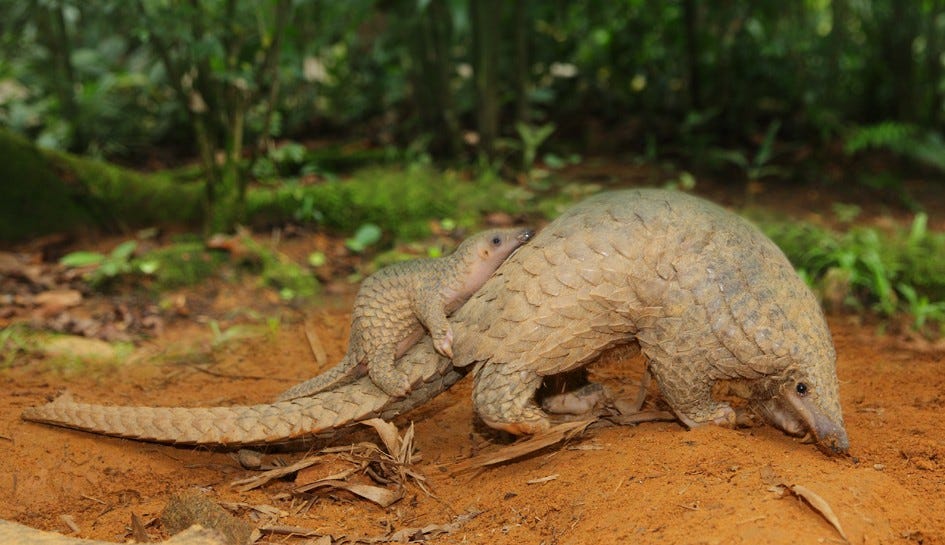The Weekly Anthropocene, April 23 2025
Darwin's frogs, Vietnam's cleantech goals, UK climate repair research, Kenya's epic electrification, a pangolin biobank, HelioSkin, FireSat, Tucson bobcats, new wonders from BYD and CATL, and more!
Chile
In October 2024, conservationists rescued 53 endangered Darwin’s frogs (Rhinoderma darwinii) from the forests of Tantauco Park in Chile before they could be killed off by the fast-spreading chytrid fungus, a deadly worldwide amphibian pandemic that had recently arrived in the park. Then, in January 2025, 32 more Darwin’s frogs were collected from the fungus-stricken park before they could be infected and sent to a breeding center in Chile. Now, the first 53 frogs, who went to the London Zoo, have already birthed 33 froglets in captivity! (Fascinatingly, among Darwin’s frogs the male broods the tadpoles in his vocal sac). Superb signs for safeguarding the species!
The Quillagua project was just completed in the Antofagasta region of Chile, including 221 MW of solar power capacity plus 200 MW/1.2 GWh of grid-scale battery storage. It’s the largest solar-plus-storage installation across all of Latin America for now - but should be superseded before the year is out by the bigger Victor Jara solar-plus-storage project under construction elsewhere in the country. Just the latest advance from the epic renewables buildout across Chile!
Iceland
Iceland has called off its fin whale hunt for 2025, hopefully heralding the beginning of the end for brutal whale-killing in the country. (Iceland, Japan, and Norway are the last three countries where the atrocity of commercial whaling is still legal). The Hvalur company was granted a license to kill 209 highly intelligent fin whales (Balaenoptera physalus) per year from 2025 through 2029, but has opted not to use it this year due to plummeting consumer demand for whale meat. A step forward!
Vietnam
The government of fast-growing Vietnam has approved an admirably ambitious updated national energy policy calling for “massive clean energy expansions,” with bold new targets to export more electricity to the rest of Southeast Asia, build 73 GW (73,000 MW) of solar and 38 GW of wind by 2030, , build as much as 296 GW of solar and 230 GW of wind by 2050, and end coal use by 2050. Even if they fall substantially short of these targets, this would still be a truly epic transformation. Excellent!
United Kingdom
Interestingly, the UK has rapidly become one of the world’s largest governmental funders of research into potential “climate repair” techniques, sometimes called geoengineering. The SeaCURE pilot project recently began operations in Dorset, removing carbon from seawater and then returning it to the ocean to absorb more. Furthermore, the Advanced Research and Invention Agency is backing a £56.8 million research program to investigate “feasible, scalable, and safe” methods of solar radiation management, with small-scale outdoor tests planned soon.
If these projects develop workable carbon removal and/or planetary cooling methods that are then scaled up to safeguard Earth’s biosphere, these could become some of the best investments any government has ever made! Vital, much-needed work - bravo!
Japan
Scientists in Japan have made a breakthrough in the promising field of cruelty-free cultivated meat, inventing a landmark new “hollow fiber bioreactor” that uses oxygen and nutrient-delivering fibers mimicking blood vessels to grow larger, contiguous cuts of meat instead of small pieces of mince. They’ve already used it to grow a single piece of chicken meat about the size of a “nugget.” Fascinating potential!
A new study has analyzed 29 years of field data from Naha Port in Japan to compare coral recovery after bleaching events on human-built breakwaters vis-a-vis nearby natural reefs. They found that coral cover bounced back much faster on the concrete breakwaters than on the natural reefs, possibly because the artificial structures provided a more robust growth substrate. Artificial structures in the ocean (e.g. wind turbines) appear to be a useful tool to help corals survive the Anthropocene!
Kenya
The International Energy Agency reports that after increasing electricity access from 37% in 2013 to 79% in 2023, the rising star nation of Kenya is on track to achieve universal 100% electricity access by 2030! Notably, the country is already a leader in wind, solar, and geothermal development, with renewable energy sources providing nearly 90% of electricity. One in five Kenyan households now benefit from solar mini-grids or smaller solar systems. Another cleantech-plus-development success story!
Singapore
The Mandai Wildlife Group in the scintillating city-state of Singapore is building up a biobank to safeguard genetic material from the world’s eight known species of pangolins, collectively the most wildlife-trafficked mammals on Earth due to demand for their scales in “traditional medicines.” They have already collected and frozen semen from 38 male pangolins, and plan to continue this much further while soon expanding to the more medically complex collection of eggs from female pangolins. Smaller-scale similar efforts are also underway in China and Malaysia, all helping ensure genetic diversity in future pangolin populations. Great work!
United States
The United States continues its self-sabotaging spasms of sadistic stupidity1. Still, ordinary Americans continue to work, create, strive, and innovate to help build a brighter future for humanity and its biosphere.

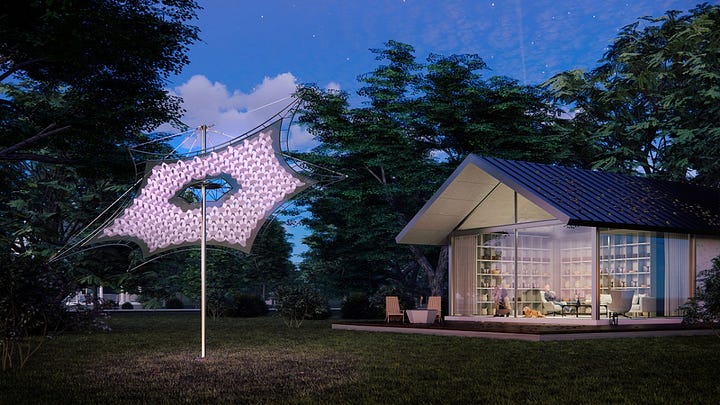


Cornell and ASU researchers are working to commercialize their HelioSkin invention, a power-generating stretchable solar fabric capable of morphing to track the sun’s movement in the sky. HelioSkin recently partnered with a manufacturer to become printable on a large scale and at a low cost. Their pilot project will be a 150-square-foot canopy with customizable lighting and brands, with the goal of creating a more aesthetically attractive household solar product. Long term, they hope to wrap buildings and roof stadiums with HelioSkin! Amazing potential.
Scientists have discovered that the colorful, carrion-eating, and critically endangered American burying beetle (Nicrophorus americanus) appears to have evolved unique and powerful detoxification abilities, able to survive normally-deadly insecticides and producing secretions that keep dead meat fresh at room temperature until they can feed it to their babies. Ongoing studies of their biochemistry (and/or microbiome) might lead to the identification of much-needed new antibiotic molecules to help fight antibiotic-resistant bacteria! Conservation brings long-term benefits.
Bloomberg has a superb new article entitled “AI Generates Loads of Carbon Emissions. It’s Starting to Cut Them, Too.” A profile of fascinating new innovations!
A judge has ordered an immediate halt to the executive branch’s illegal “arbitrary and capricious” freeze of Bipartisan Infrastructure Law and Inflation Reduction Act funds. If the rule of law wins out in this case (sadly an open question these days) this should reignite much-needed clean energy and climate action projects across America!
The first satellite in the planned FireSat constellation, the most advanced wildfire detection satellites in history, is now in orbit. Launched by the global nonprofit Earth Fire Alliance coalition with support from Google, the plan is for machine learning analysis of FireSat’s unprecedentedly high-resolution and fast-updating imagery to rapidly detect, warn of, and use AI to predict the spread of wildfires while they’re still small enough to stop. Three more FireSats are under construction, and the full constellation of 50 should be in orbit by 2030. Much-needed excellent work!
Climate change is making allergy season worse — but it now looks like the omalizumab drug is an actual universal allergy cure, using monoclonal antibodies (proteins carrying instructions to the immune system) to forestall allergic reactions!
After a possible prototype was spotted on the street, anonymous source-backed rumors are spreading that secretive U.S. EV startup Slate Auto, which has already raised $111 million and was recently found to be backed by Jeff Bezos, plans to start producing an affordable electric pickup truck at the relatively low price of around $25,000 as soon as late 2026. If successful, hopefully a sign of new competitiveness for America’s under-attack EV sector!
A 97 year old female Western Santa Cruz Galápagos tortoise (Chelonoidis porteri) who has lived at the Philadelphia Zoo since 1932 recently became a mother for the first time, with four hatchlings so far from her 16 eggs. A genetic boost for the species!
The state of Massachusetts has developed a highly effective “turnkey” program providing and installing solar panels, heat pumps, and home batteries for low- and moderate-income households. The Cape and Vineyard Electrification Offering is currently providing 55 homes with free or heavily subsidized cleantech, lowering barriers by handling installation logistics and deploying multiple integrated technologies at once. A model to be scaled up across the nation!
Wild female bobcats (Lynx rufus) have started raising their kittens in suburban backyards in and around Tucson, Arizona. The Bobcats in Tucson Research Project found that they prefer yards without dogs and with trees, bird feeders, and water, and that female bobcats often return to the same backyard year after year - generally to the householders' delight. An epic new example of human-wildlife coexistence!
China
As high-quality electric vehicles from BYD continue to spread rapidly around the world, the carmaker recently unveiled a new electric off-roader SUV sporting a fully integrated “Lingyuan” drone platform that can both launch and charge photography drones from DJI while the vehicle is moving. The drone can then send live footage to the moving car’s dashboard screens. Cleantech innovations are just getting started!
China has installed 59.71 GW (59,710 MW) of new solar capacity in Q1 2025. Notably, 20.24 GW were installed in March 2025 alone — a 124% year-on-year increase!
On April 21, 2025, Chinese battery titan CATL presented three impressive new advances in EV battery technology: an upgraded Shenxing lithium iron phosphate battery that offers 520 kilometers of range after just 5 minutes of charging time, a new Naxtra sodium-ion battery (made from cheaper and less flammable materials than lithium), and a new dual-power battery with a maximum range of 1,500 kilometers per charge. This kind of thing is why this newsletter believes that greenhouse gas emissions across much of the world will soon fall much faster than expected — the cleantech revolution is only just beginning!
This newsletter continues with extra bonus articles for paid subscribers only! Your subscription makes possible more of The Weekly Anthropocene’s data-driven climate & environment progress journalism.
Keep reading with a 7-day free trial
Subscribe to The Weekly Anthropocene to keep reading this post and get 7 days of free access to the full post archives.






